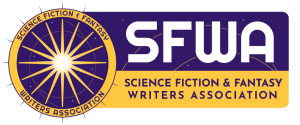by Ken Pelham
![]()
Occasionally, you come across a work of fiction told in the form of documents. Letters, court reports, diaries, news articles, and such. We call this epistolary narration (from the root word, epistle, meaning “letter”). Some call epistolary a gimmick. I can’t speak for anyone else, but I’m a sucker for it.
In the 18th century, epistolary storytelling was a big deal. But it seems the real value of the form was kind of lost on its early purveyors. Take Gulliver’s Travels (1726), for example. Great fantasy and satire, told in a single long letter from Gulliver to his cousin. It may have seemed a natural vehicle to writers of the day; tell the story as if it were an actual report.
But by the 19th century, epistolary storytelling was fading into the wallpaper as writers realized there was no need to frame a narrator’s story as a document. Still, remarkable examples kept it alive. Mary Shelley reanimated it in 1818 like a man cobbled together with piece parts. Poe’s “MS. Found in a Bottle” (1833) and The Narrative of Arthur Gordon Pym of Nantucket (1838). But these stayed mostly within first-person and nested first-person viewpoints.
So if epistolary is just first-person narrative, why bother?
Well, it’s not necessarily first-person. Most news and magazine articles are told in the third-person, in detached, dispassionate voices. Reportorial stuff. But detached and dispassionate can reveal bits of information while withholding bias and opinion, forcing the reader to fill in gaps. Better yet, multiple documents allow the writer to experiment with multiple first-person narrators.
The 19th century saw some inroads into better use of epistolary in such things as Wilkie Collins’s detective novel, The Moonstone (1868), cleverly uses police interviews of multiple witnesses. Bram Stoker made a breakthrough with Dracula (1897), using letters, ships logs, news clippings, diaries, and doctors’ notes to illuminate multiple agendas and viewpoints. Everyone’s but the evil Count’s, that is. Which was a smart strategy, keeping us outside the unfathomable thoughts of the undead. This was before vampires devolved into conflicted, glittery snowflakes.
Among the best of the form in science fiction are Daniel Keyes’s short story “Flowers for Algernon” (1958) and Andy Weir’s The Martian (2011). In the former, a man with a mental handicap records his thoughts as he proceeds through an experiment to increase his intelligence. His journal becomes a compelling, heartbreaking record of his journey, and I doubt it would have packed the same wallop in a more conventional story-telling manner. In the latter, we’re treated to the reinvention of old-school hard science fiction, as a marooned astronaut problem-solves his way out of the technical jam of a lifetime.
Stephen King got serious mileage from the form in his debut, Carrie (1974), even though he later described the novel as “clumsy and artless.” I loved it. More recently, Max Brooks used post-apocalypse interviews to unveil the tragic global picture of World War Z: An Oral History of the Zombie War (2006).
Epistolary tales garnered an audience in movies, characterized by “found footage” films, the natural descendants of “found manuscript” tales like the two Edgar Allan Poe stories mentioned above. Think Blair Witch Project (1999), Cloverfield (2008), and The Europa Report (2013).
What is it about made-up documents that bring fiction to life? Simple answer, they keep a foot planted in the world of nonfiction by sounding like nonfiction, lending a certain voice of authenticity and importance. And a simple document or record can express true feeling. Think of one real-life example, the famous “wow” note of SETI lore. Researcher Jerry Ehman, sifting for evidence of intelligent origin through an endless printout of numbers and letters, the recorded data from a deep-space radio telescope, spotted an anomalous, drop-jaw sequence, circled it, and scribbled “Wow!” in the margin. That one true-science note packs more punch than any descriptive passage of the same episode.
Because science and research live on the blood of data streams, science fiction writers are especially well-positioned to bring nonfiction-sounding documents to life in fictional worlds. If you’re feeling a bit stuck or in the mood for a different narrative vehicle, read a few examples named above and tinker with the epistolary approach. It might be just the thing that sets a story apart.
•••
Ken Pelham’s debut novel, Brigands Key, won the 2009 Royal Palm Literary Award and was published in hardcover in 2012. The prequel, Place of Fear, also a first-place winner of the Royal Palm, was released in 2013. Ken co-founded the Alvarium Experiment, a groundbreaking writers’ consortium specializing in speculative fiction anthologies. His nonfiction book, Out of Sight, Out of Mind: A Writer’s Guide to Mastering Viewpoint, was named the Florida Writers Association 2015 Published Book of the Year. He’s currently working on a nonfiction book about the evolution of all fiction genres; check out that book’s illustrated timeline companion.
Ken is a member of International Thriller Writers, Florida Writers Association, and Maitland Writers Group. He lives with his wife, Laura, in Maitland, Florida. Visit him at www.kenpelham.com
